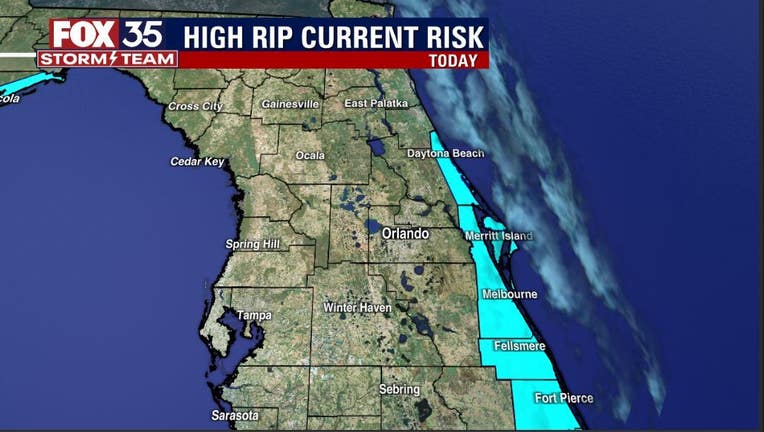High rip current risk at all east coast Florida beaches Sunday: what you need to know

LAKE MARY, Fla. - The National Weather Service has issued a Rip Current Statement to advise people that conditions are likely to produce powerful rip currents on the Florida coastline.
Rip currents are dangerous narrow channels of water found near ocean shorelines. According to the National Ocean Service, rip currents can move at speeds of up to eight feet per second. If a person is caught in the current, it can pull them out to deeper water further from the shore.
Rip currents can form when there are many waves breaking on a shore line, in order to return that water back to the ocean, a strong current is formed to bypass the breaking waves. Rip currents are not always visible, but when they are, they look like a section of calm amongst the breaking waves.

There are ways to lower your risk of getting caught in a rip current. Here's what expert say:
- Check local water conditions before you go. Check the local beach forecast.
- Swim at beaches that have lifeguards present. If you are stuck in a rip current, they are trained to help get you out. According to the U.S Lifesaving Association, the chances of drowning at a beach where lifeguards are present is 1 in 18 million.
- Do not swim in the calm area between the breaking waves. It may look like a safe place to shield yourself from the breaking waves, but it is really a rip current.
- Never assume. Even if the beach does not have many breaking waves, rip currents are still present along the shore.
MORE NEWS: Tropical depression expected to form early next week: Will it become 'Bonnie'?
What happens if you are caught in a rip current? First, do not panic. Experts say panicking can increase your chance of becoming exhausted. Instead, calmly swim parallel to the shore to escape the narrow passage of the rip current. Swimming directly to the shore will exhaust you more as the current is pushing against your body, causing you to exert more energy. Once free from the current, swim at an angle away from the current and towards the shore.
If you think you cannot reach the shore, relax and call for help. A lifeguard will come pull you out.
For more information on weather conditions, visit FOX Weather.

